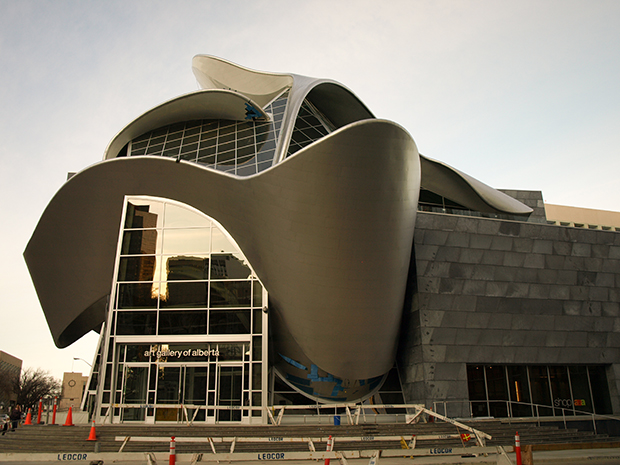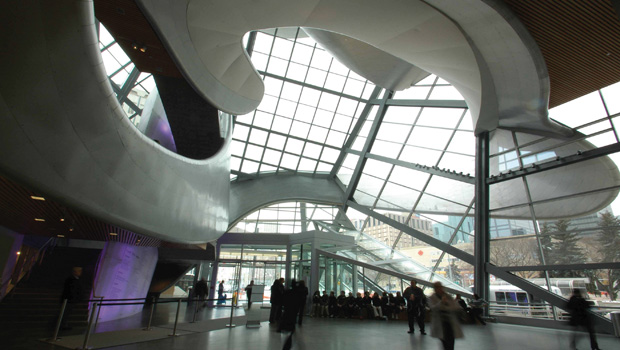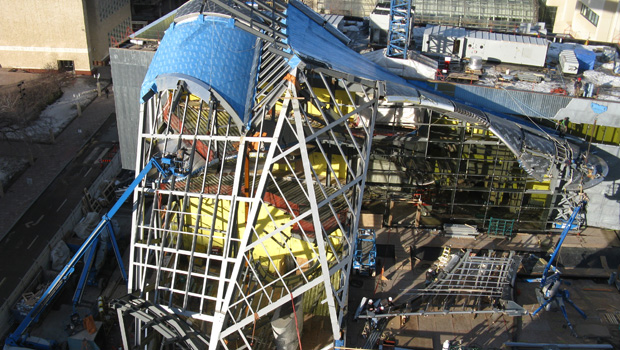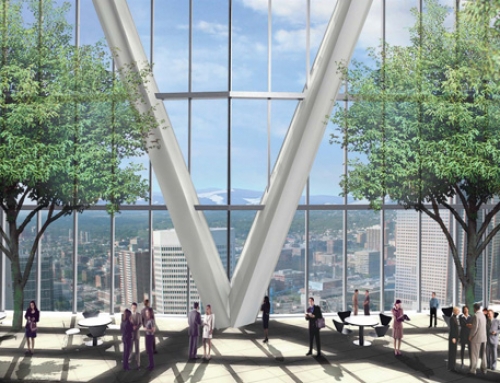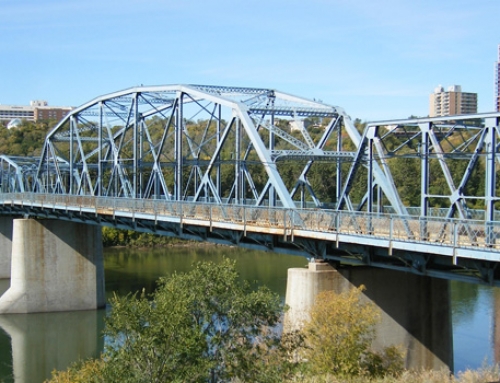Project Description
Building is a work of art in steel
Sinuous stainless steel surfaces and complex curving geometry inspired by the aurora borealis render the Art Gallery of Alberta a work of art in itself.
The project, on the edge of Edmonton’s downtown Churchill Square, is a renovation of the existing concrete building to create expanded, flexible, museum quality space for the gallery’s permanent collection and major traveling exhibitions. The renovation consisted of a two-story vertical addition above the existing building to contain gallery space and offices, and the addition of an atrium that exhibits the creative and dramatic use of steel to invoke the borealis.
Structural steel was the obvious choice for the vertical addition because it minimized the impact on the existing structure, reduced loads on the foundation, and provided unimpeded column-free interior space to maximize flexibility for exhibitions. The entire addition is supported by only six columns located on the north and south perimeters.
The building envelope of the atrium is formed from angular, transparent glazing planes penetrated by curving, reflective metal-clad elements that create the borealis. “You couldn’t do that with anything other than structural steel because of the complexity of the shapes,” says Trevor Hobbs, detailing and technical lead, Empire Iron Works.
Construction of the atrium presented numerous challenges due to the complex geometry, Hobbs says. “While the structure itself looks quite light and airy, we were dealing with heavy loads and members that had to line up with each other precisely. Both exposed and concealed connections required special attention due to the 3D aspect, the aesthetics, and the close proximity of other building elements. This was most difficult where the skin fit tightly to the structure and restricted the space we could work with.”
Adding to the challenges, the borealis edging panels were pre-fabricated in St. Louis and then attached to brackets on the steel framing on site. “We had to make sure the structural steel was correct and that the brackets were in the correct locations. It’s a shame it’s covered up, because it’s by far the best part,” Hobbs says.
Ensuring museum quality, climate controlled interior space demanded a high performance building envelope. This requirement created a challenge where architectural features were designed to penetrate the envelope.
“Some elements of structural steel were cantilevered through the skin,” Hobbs says. “Because steel is a good thermal conductor, this could compromise the museum quality space. The team resolved this issue by incorporating a thermal break in the steel at the point where it penetrates the building envelope and adding a non-conducting material in the joint to isolate the interior steel from the exterior steel.”
A large measure of the success of the project is due to teamwork and the use of a variety of emerging techniques in 3D modeling to coordinate and communicate the design details necessary for efficient site construction, Hobbs says.
“Everybody used different programs and there were many files transferred back and forth. It was a really good project in terms of the level of teamwork that we achieved.”
Project Team
Architect: Randall Stout Architects, Inc. and HIP Architects, Associate Architect
Structural Engineer: DeSimone Consulting Engineers and BPTEC-DNW Engineering Ltd.
Project Manager / General Contractor: Ledcor Construction Limited
Fabricator: Empire Iron Works Ltd.

